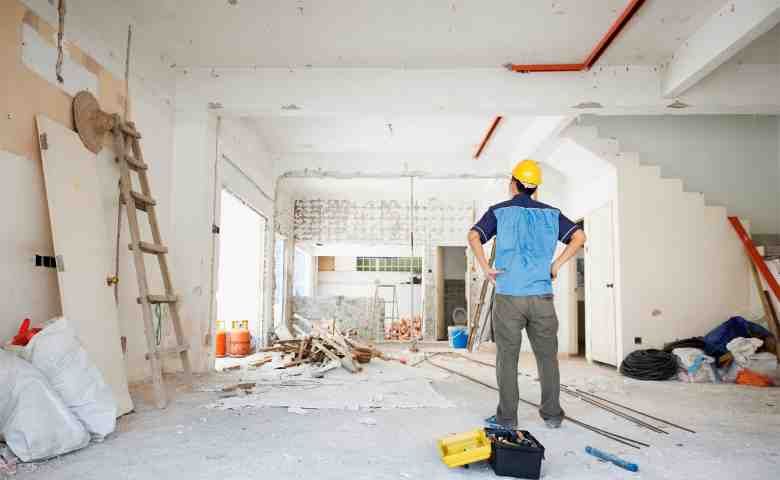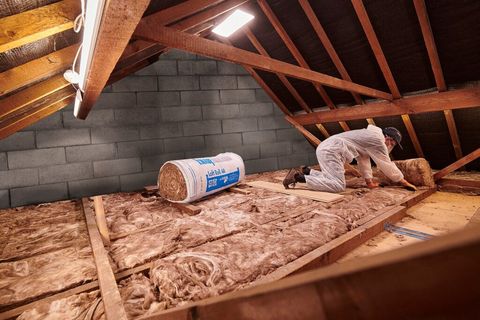Exploring Home Renovation Contracting: Detailed Insights, Learning and Guidance
Home renovation contracting refers to the organized process of planning, supervising, and completing home improvement projects with the help of skilled professionals. Renovation work can range from minor interior adjustments to large-scale remodeling involving structural changes, electrical rewiring, plumbing updates, and design transformations. This system exists because modern renovation projects often require specialized knowledge, safety compliance, and coordination across multiple trades.
A renovation contractor acts as the central coordinator who manages tasks, schedules, labour, materials, and quality standards. This role ensures that the homeowners expectations are translated into practical, compliant, and professionally executed work. As homes age, lifestyles evolve, and design preferences change, renovation contracting provides a structured path for homeowners to maintain and improve their living spaces.
Importance
Home renovation contracting matters today more than ever. Several factors contribute to its growing relevance:
Aging Homes and Structural Needs
Many houses are decades old and require repairs or modernization. Contractors help assess structural conditions, propose realistic solutions, and ensure improvements meet safety requirements.
Housing Market Conditions
In many regions, property prices and mortgage rates have risen significantly, making relocation less attractive. Instead of moving, homeowners often choose to renovate, leading to increased demand for contractors who can handle complex projects efficiently.
Energy Efficiency and Sustainability
There is rising awareness of energy consumption, insulation quality, and eco-friendly materials. Contractors guide homeowners in choosing efficient designs, ventilation systems, lighting upgrades, and sustainable materials that support long-term savings and environmental responsibility.
Better Space Utilization
With more people working from home or prioritizing multifunctional spaces, renovated areas like home offices, study rooms, or expanded living areas have become essential. Contractors help redesign layouts to improve space functionality.
Health and Safety Standards
Renovation contracting helps ensure that work is carried out following safety norms—especially in electrical, plumbing, and structural areas. Proper supervision reduces risks associated with faulty installations or unsafe materials.
Project Coordination Expertise
Renovations require planning, sequencing, and management. Contractors coordinate timelines, ensure skilled workers are available, manage materials, and handle unexpected issues. Their experience helps keep the project organized and consistent.
These benefits make renovation contracting a valuable part of modern home improvement, helping homeowners maintain comfort, safety, and property value.
Recent Updates
The past year has brought notable shifts in how renovation contracting operates:
Higher Renovation Activity
Home renovation demand has increased as homeowners choose improvements over moving. Many families prefer enhancing their existing homes with better designs, improved layouts, and updated interiors.
Advanced Technology Adoption
Technology in contracting has progressed rapidly. Virtual design tools, 3D modelling, material-visualization apps, and AI-driven planning platforms help homeowners preview ideas before actual work begins. Contractors use digital project-management tools to coordinate tasks, timelines, and labour more effectively.
Sustainable Renovation Trends
More renovation projects now include eco-friendly materials, low-VOC paints, energy-efficient lighting, better insulation, rainwater systems, and solar-compatible design upgrades. This trend is expected to grow as sustainability becomes a higher priority in residential planning.
Smart Home Integration
More homeowners are adding smart devices such as automated lighting, climate control systems, home-monitoring cameras, and energy-management tools. Contractors increasingly incorporate smart-home wiring and infrastructure into renovation projects.
Skilled Labour Challenges
In some areas, there is a shortage of skilled workers in carpentry, electrical work, plumbing, and specialized trades. As a result, renovation timelines and planning requirements have become more structured and organized.
Greater Focus on Quality Standards
Renovation quality, safety checks, and professional documentation have gained more importance. Homeowners expect clear contracts, transparent communication, and verified workmanship from contractors.
These updates collectively show that home renovation contracting is moving toward a more organized, tech-supported, and quality-focused environment.
Laws or Policies
Renovation contracting is shaped by several laws, rules, and government guidelines that help maintain safety, quality, and compliance. While regulations vary by country and region, the following areas are typically included:
Building Approvals and Permits
Major changes to a building such as structural modifications, extensions, wall alterations, or plumbing and electrical shifts often require official permission from local building authorities. These approvals ensure the changes comply with building codes.
Occupancy Rules
After renovation, especially when structural changes are involved, some regions require inspection or certification before homeowners can fully use the updated area.
Contractor Competency Requirements
Some jurisdictions require contractors to be registered or recognized as “competent professionals”. This includes documentation of skill, experience, or technical knowledge. It ensures that renovation work is executed safely and reliably.
Safety Compliance
Contractors must follow safety standards for electrical work, fire safety, sanitation, ventilation, and material usage. These guidelines help protect occupants and ensure long-lasting quality.
Environmental Regulations
Eco-friendly renovations may need to follow rules related to material disposal, energy efficiency, water management, or sustainable building practices.
Consumer Protection
Homeowners are generally encouraged or required to sign a clear renovation contract that states:
-
scope of work
-
timelines
-
payment milestones
-
responsibilities
-
quality standards
-
warranty terms
This protects both parties from disputes and promotes transparent communication.
Tools and Resources
Homeowners and contractors can improve renovation outcomes by using modern tools and organized resources:
Project Management Tools
-
Digital platforms like Trello, Asana, or ClickUp help plan tasks, track progress, and manage timelines.
-
Contractors use these tools to assign duties and manage workflow.
Budgeting and Planning Tools
-
Online renovation calculators help estimate material and labour needs.
-
Homeowners can use spreadsheets to track expenses and milestones.
Design and Visualization Tools
-
3D design platforms, interior-planning apps, and virtual walkthrough software help visualize layouts and finishes.
-
These tools reduce design errors and improve decision-making.
Smart Measurement Tools
-
Digital measuring devices and mobile apps allow homeowners to record dimensions accurately.
-
Contractors use laser tools and layout systems for precise alignment.
AI-Supported Planning
-
AI tools assist with layout optimization, materials planning, and drafting contract documents.
-
These tools streamline decision-making and reduce planning errors.
Regulation and Permit Portals
-
Many cities offer online systems for building approvals, renovation permits, and plan submissions.
-
Centralized portals simplify documentation.
Checklists and Templates
-
Renovation checklists help track design needs, materials, safety requirements, and contractor discussions.
-
Contract templates ensure expectations are clearly defined.
These tools help create smoother, more transparent renovation experiences for homeowners and contractors.
FAQs
What is the role of a renovation contractor?
A renovation contractor plans, supervises, and manages renovation work. They coordinate materials, labour, schedules, and ensure compliance with building rules. Their goal is to deliver safe, well-executed, and organized home improvements.
Do all renovation projects need approvals?
Not always. Small repairs like painting or minor interior changes usually do not require permits. Structural alterations, electrical upgrades, water-line changes, or extensions often need official approval. It is best to check with your local authority.
How can homeowners make renovation projects run smoothly?
Plan clearly, define priorities, maintain open communication with the contractor, track progress through project-management tools, and document all decisions in writing. Establishing milestones helps avoid confusion.
What should be included in a renovation contract?
A good contract covers work details, timelines, payment phases, material specifications, responsibilities, safety measures, and warranty terms. Both parties should read and agree on every point.
How do I ensure good quality work?
Request progress updates, inspect completed stages, use documented checklists, and choose materials carefully. Hiring qualified professionals and following safety standards help ensure long-lasting quality.
Conclusion
Home renovation contracting plays an essential role in upgrading and maintaining modern homes. As renovation needs grow driven by aging buildings, shifting lifestyles, and sustainability priorities contractors provide the professional expertise necessary to create safe, functional, and visually appealing living spaces. The field continues to evolve with new technologies, digital planning tools, and smarter project-management practices.
Understanding the rules, trends, and available resources helps homeowners make informed decisions while ensuring that renovation projects remain organized and successful. With proper planning, clear communication, and professional support, renovation contracting leads to improved living comfort, better space utilization, and long-term property value.





